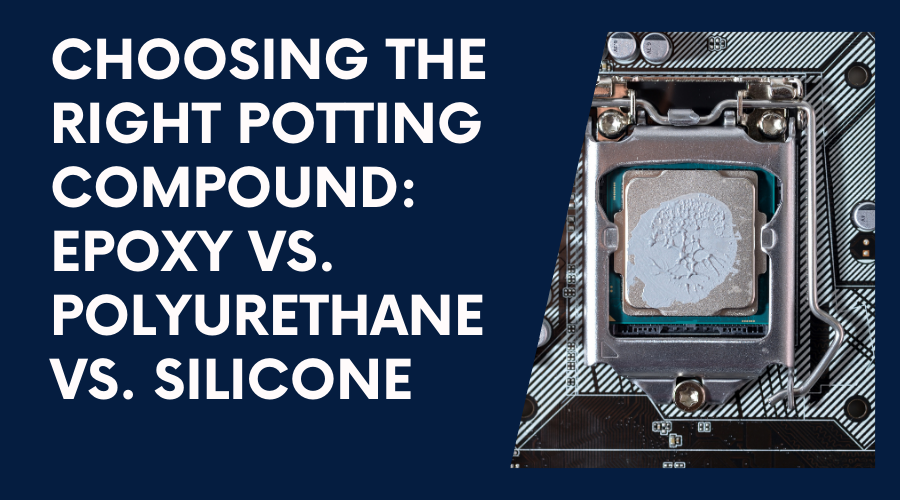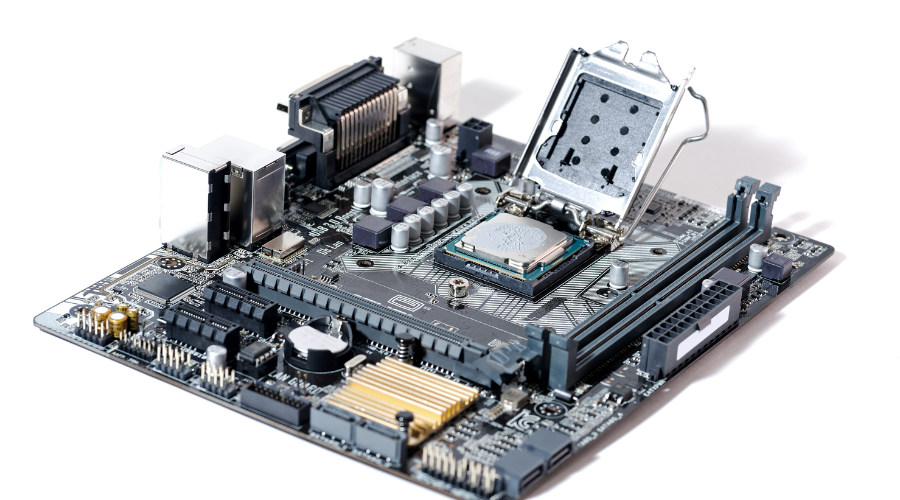
The potting compound is a substance that is poured into different devices. This is done to prevent them from various elements. Those elements can be dirt or dust particles, chemicals, debris, etc. When discussing potting compounds, epoxy, polyurethane, and silicon are often used. However, each one of them has their good and bad points. This blog will help you determine which potting compound to use for which device and purpose. So, let us write down the three types of potting compounds. Let's begin.
Epoxy is a transparent liquid substance used to fill different devices to protect them.
It can be stuck on several objects, such as metal, wood, concrete, and plastic.
It can bear heat and is chemical resistant.
It also has water and moisture resistance.
It is very powerful in mechanical things.
Epoxy can prevent electricity from passing through it.
It can be stuck on construction, automotive, and electronic items.
It is often used to coat floors and marine finishes.
In art, such as prototyping and production
Last but not least. It is also used in electronic devices to protect them from dirt and dust particles.
Sticks greatly to several objects
Excellent chemical and moisture resistance
Excellent mechanical and thermal attributes
Durable for a long time
Breakable in freezing temperature
It's hard to eliminate it once applied.
Once poured into a device, it takes a lot of time for it to be cured. But it depends on the formula.
Electronics: PCB encapsulation and power supplies
Automotive: Sensors and modules
Industrial Machinery: Intense environments such as motors or actuators
Epoxy's strong stickiness, hardness, and chemical resistance make it perfect for demanding applications where longevity is critical.
Polyurethane is also a liquid substance (like polish), just like epoxy. It is mostly used in foams, coatings, and hard or bendable plastics. However, its use depends on the formula.
It is adaptable
It can bear different chemical reactions
It is a good insulator (heat and sound)
It is long-lasting and can bear the hardships of weather
It can transform into a foamy soft material or as hard as varnish.
It is used in foams such as mattresses and sofa cushions
It is used in coatings and varnishes, such as wooden floors and vehicle paints
It is used in roller skate wheels and gaskets.

It is adaptable and can bear chemical reactions
It has nice moisture and is UV resistance
Once it is poured, it cures very fast compared to the majority of epoxies
There are very low chances of getting it broken in low temperatures.
It has less heat resistance as compared to epoxy
It is less chemically resistant
It can break down under prolonged UV exposure (Unless stabilized)
End Customer Electronic Items: LED drivers and chargers
Automative (internal): Dashboard electronic items and lightning elements
Home Appliances: Control units for washing machines, etc.
Lightning: LED strips and panels, where vibration resistance is the basic thing
Polyurethane provides an adaptable and impact-resistant restrictions, making it appropriate for applications with vibration, temperature shuffling, or small mobility.
Silicon is a hard substance that is a semiconductor. It is an essential part of today's electronic items. It also has a blue-grey shine/texture.
It is a semiconductor which is used in devices such as transistors and combined circuits
Its melting degree is very high
Great thermal and electrical resistance
It is resistant to chemicals and is rust-resistance
Electronics: Due to its semiconductor quality, it is used in digital devices such as solar panels, microchips, and transistors.
Construction: It is used in construction materials such as glass and ceramics.
Medical Devices: Silicon is used in numerous medical devices.
Solar Technology: Solar technology is a basic material in solar cells.
It is very flexible and elastic
It has phenomenal thermal stability
It has great dielectric attributes
It is easy to rework or eliminate if required
It is usually more costly
It has less mechanical strength
Nasty stickiness to some surfaces without a primer
Aerospace and Defense: Extreme high or low temperatures and devices where vibration occurs
Medical Devices: Medical devices used to treat patients. Silicon is also used in monitoring equipment to monitor a patient's medical condition.
Telecommunications: Antennas that are fixed on your balcony, etc.
LED and Lightning: Great-powered LEDs and heat-producing lighting systems
Even when the weather is bad, silicon stays in place and is adaptable. However, it cannot pass electricity through it.
Combining: Two major resin substances are combined: a base plus a hardener.
Application: A liquid mixture is poured into a container, a mold, or an electronic device.
Curing: After pouring, the compound gets dried and then hardened. The heat helps it to harden nicely.
Note: One should understand the difference between silicon and silicone. The difference between them is a big one. Well, silicone is a rubber like material. It is used in the making of household items, cutlery and toys. On the other hand, silicon is, what we have described above.
Conclusion
So, there we are. This blog is a complete guide on all three compounds: Epoxy, Polyurethane, and silicon. We have also written down everything about them in this blog. Well, there is no comparison between them, as each has different functions and attributes. Nonetheless, all of them are ideal for every device/application.